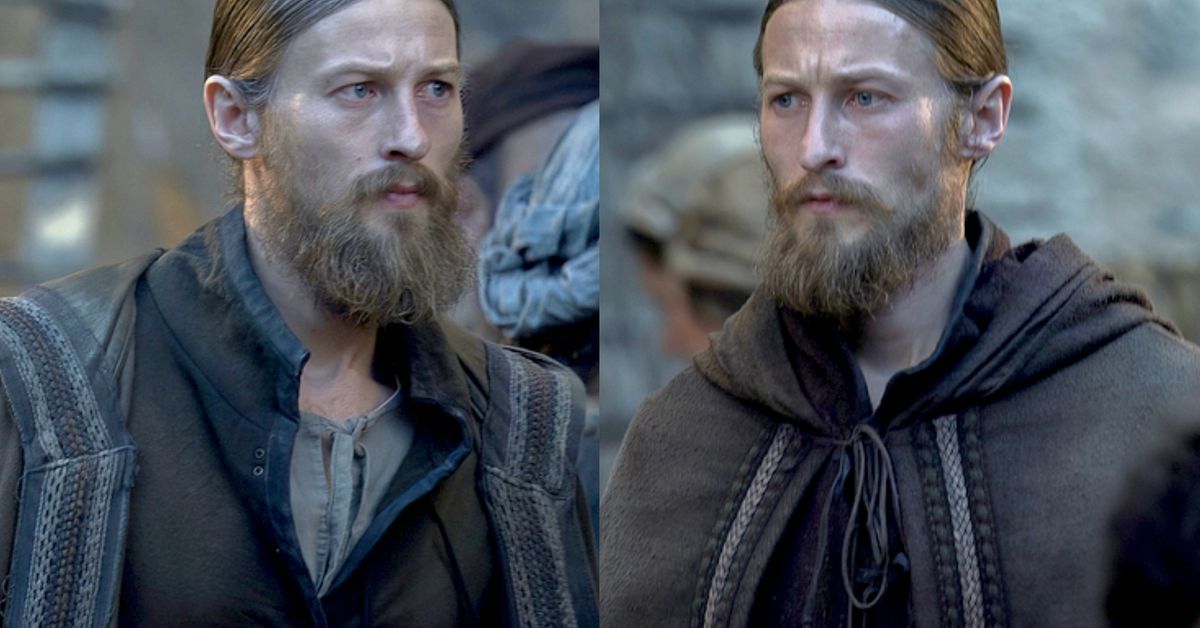House of the Dragon season 1 surprised Game of Thrones fans who were not well versed in George R.R. Martin’s Fire & Blood with the introduction of its two most confusing characters yet: Ser Arryk Cargyll and Ser Erryk Cargyll.
In an effort to mimic history and maintain a sense of reality, Martin has gleefully named key characters in Westeros with the same names or variants based on family. But Arryk and Erryk, being twin members of the Kingsguard with nearly the same name, were a next-level troll. Luckily, actors Luke and Elliott Tittensor — yes, they’re real twins, no CG required — gave them vivid personalities that made their split between the Greens and Blacks all the more gut-wrenching. Then season 2 upped the ante.
[Ed. note: This story contains major spoilers for the end of House of the Dragon season 2 episode 2.]
In season 1, Arryk and Erryk were brothers and allies whose previous missions included locating the twerp Aegon in episode 9. But as Queen Alicent and her father, Ser Otto Hightower, pulled strings to put Aegon in power and bump out Princess Rhaenyra from her position as heir to the throne, Arryk and Erryk drifted apart. They both seemed to agree Ser Criston Cole is a nimrod — objective fact? — but after butting heads over loyalties, Erryk helped Rhaenys escape King’s Landing, while Arryk remained to serve Aegon. Season 2 finds them on opposite sides of the brewing conflict, and Arryk makes one of the worst calls ever: When Criston guilt trips him over the death of li’l Jaehaerys, the twin soldier sets off to assassinate Rhaenyra and inevitably confront his bro.
Mistakes were made — but Arryk’s fateful fuck-up results in one of my favorite fight sequences of either Game of Thrones series. The scene kicks into high gear as Arryk strides, with the confidence of an undercover twin, up to the guard protecting Rhaenyra’s room. Assuming Erryk’s identity, Arryk tells the man on duty to take a break. Note to self: Do not trust a twin who wants you to walk away from the job! Luckily, thanks to his twindar (and maybe the White Worm), Erryk shows up just as Arryk prepares to strike down Rhaenyra in her bed. The brawl begins, and it’s pure chaos. A few beats later, another of Rhaenyra’s men literally exclaims, as he must, “Which one is Erryk?!”
:no_upscale()/cdn.vox-cdn.com/uploads/chorus_asset/file/25503180/houseofthedragon_twins.jpg)
Image: Max
There are only a few circumstances that can lead to a classic “Which one do I shoot?!” impostor moment, and even fewer that conjure the visceral confusion of what House of the Dragon director Clare Kilner achieves in episode 2. Typically, when there’s a shape-shifter in play, we get at least a burst of hero-on-fake-hero action — Mystique’s fight with Wolverine in the 2000 X-Men being one of the best, though it ends with her transforming back into her blue self, and then into Storm as a way of escaping the brawl. Actual “Which one do I shoot?!” scenes end up being rather chill, so the villain doesn’t show their hand. T-1000 impersonating Sarah Connor in Terminator 2: Judgment Day is high-tension but low-key, as Fake Sarah Connor begs for John’s help just as Real Sarah Connor walks around the corner and blasts him from behind. (Terminator Genisys has a similar scene involving Kyle Reese, which does force young Sarah Connor to actually decide which one to shoot, but, uh, maybe watch Terminator 2 if you need a molten metal doppelganger fix.)
While I appreciate Buzz snuffing out his own Evil Buzz in Toy Story 2, the apex of lookalike-on-lookalike action in film has to go to James Wong’s The One, which put the multiverse to good use by pitting an evil Jet Li against himself. For 2001, all the sequences in which Li fights himself — through body doubles, face replacement, digital compositing, and a number of other techniques that involve punching tennis balls — are exceptional, showcasing various martial arts techniques enhanced with multiversal superpowers. Even the behind-the-scenes documentaries of how they did it rock:
But there’s a clear advantage to having two physical warriors on set able to duke it out, and Kilner takes full advantage. When Arryk and Erryk begin whacking the crap out of each other, the camera drifts away from the combat to pick up the fear on Rhaenyra’s face, leading to intentionally convoluted action geography. A scene that’s meant for a pure adrenaline rush might showcase the sword swings and defensive kicks to ensure, even while wearing similar period-appropriate armor, the players are identifiable. There are a few tells in the fight that viewers might try to cling to — Erryk gets his leg slashed early on, and it could be a tell, if any shot held for long enough. But Kilner amplifies the disorienting effect of two twins fighting by breaking the 180-degree rule, bouncing between angles that won’t cohere for the brain. It’s the medieval action equivalent of a ball-and-cup trick.
The brawl leaves the spectators without a true clue of who won, a beat that left me gasping for air. Even moments after watching it, I wasn’t completely sure Arryk prevailed over Erryk… but it ultimately didn’t matter. One twin dying meant both twins had to go, for honor. The fight ends in Targaryen suicide, another tragedy on top of a tragedy. While I am sad to see the twins go from the series, it also feels like history — I’m not sure the stars will align for such a captivating “Which one do I shoot?!” scene ever again.

